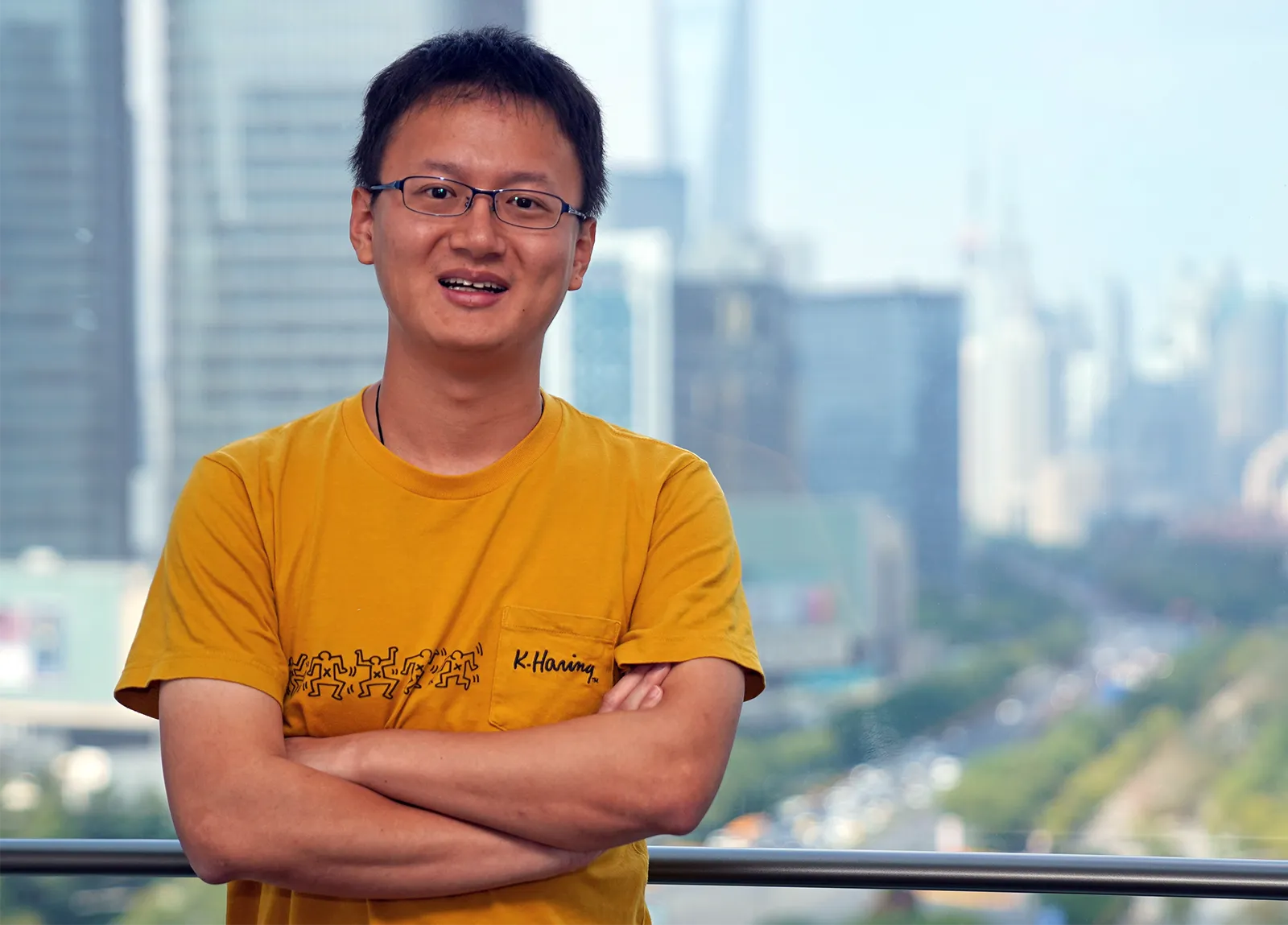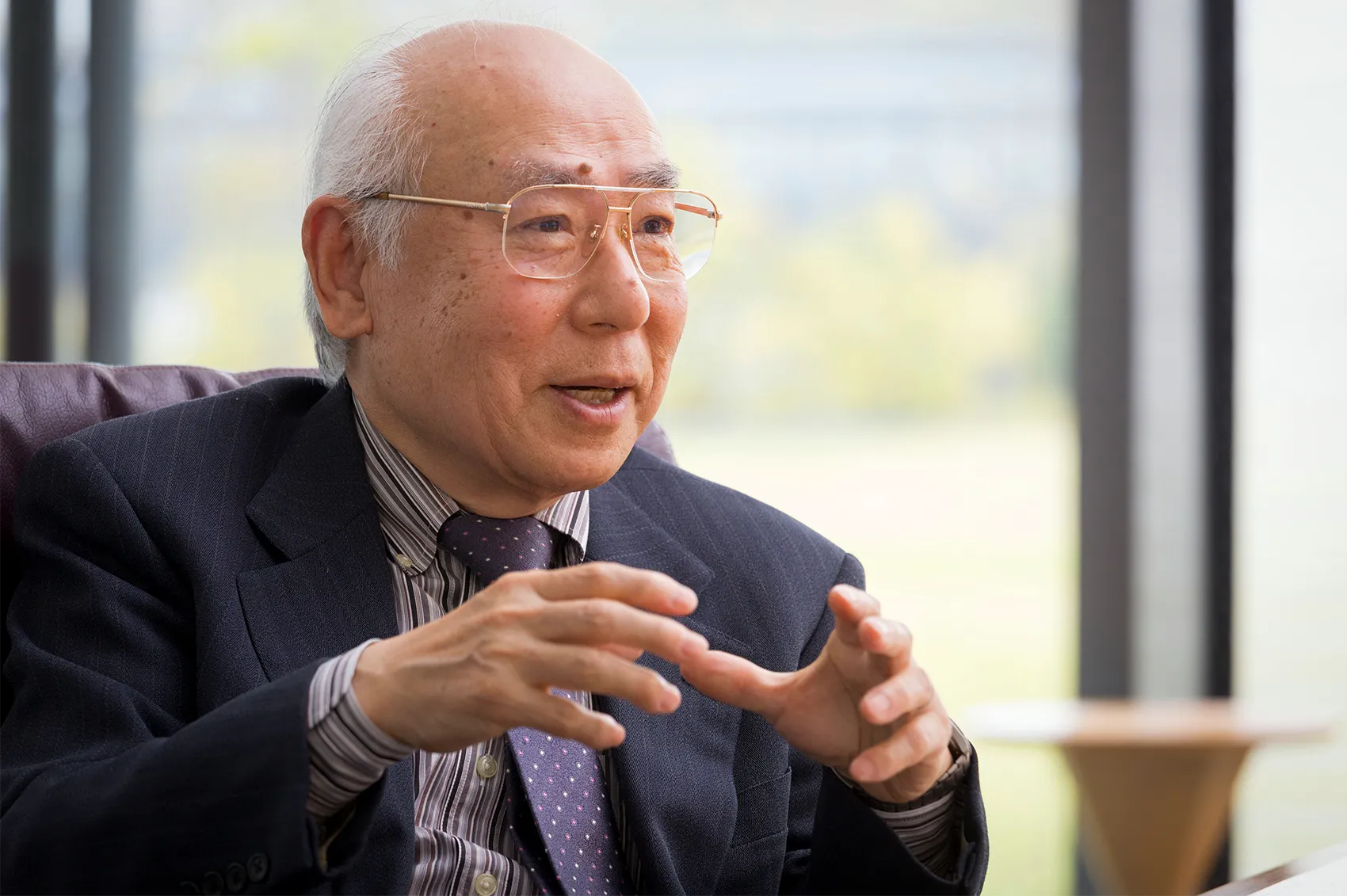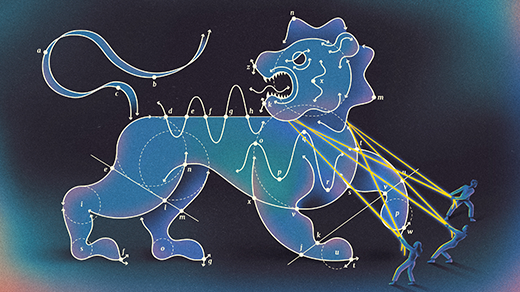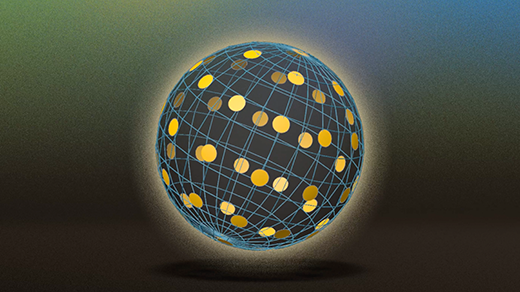New Proof Shows That ‘Expander’ Graphs Synchronize
Introduction
Six years ago, Afonso Bandeira and Shuyang Ling were attempting to come up with a better way to discern clusters in enormous data sets when they stumbled into a surreal world. Ling realized that the equations they’d come up with were, unexpectedly, a perfect match for a mathematical model of spontaneous synchronization. Spontaneous synchronization is a phenomenon in which oscillators, which might take the form of pendulums, springs, human heart cells or fireflies, end up moving in lockstep without any central coordination mechanism.
Bandeira, a mathematician at the Swiss Federal Institute of Technology Zurich, and Ling, a data scientist at New York University, dove into synchronization research, obtaining a series of noteworthy results on the strength and structure that connections between oscillators must have to force the oscillators to synchronize. That work culminated in an October paper in which Bandeira proved (together with five co-authors) that synchronization is inevitable in special types of networks called expander graphs, which are sparse but also well connected.
Expander graphs turn out to have a slew of applications not only in math but also in computer science and physics. They can be used to create error-correcting codes and to figure out when simulations based on random numbers converge to the reality they are trying to simulate. Neurons can be modeled in a graph that some researchers believe forms an expander, due to the limited space for connections inside the brain. The graphs are also useful to geometers who try to understand how to traverse complicated surfaces, among other problems.
The new result “really gives huge insight into what are the types of graph structures that are going to guarantee synchronization,” said Lee DeVille, a mathematician at the University of Illinois who was not involved in the work.

Shuyang Ling (pictured) and Afonso Bandeira were researching how to identify clusters in data when Ling noticed their equations could be applied to the Kuramoto model of synchronization.
Courtesy of NYU Shanghai Communications
Bitter Sweet Synchrony
“Synchronization is really one of the fundamental phenomena of nature,” said Victor Souza, a mathematician at the University of Cambridge who worked with Bandeira on the paper. Consider pacemaker cells in your heart, which synchronize their pulsations through electrical signals. In laboratory experiments, “you can get hundreds or thousands of these embryonic pacemaker cells pulsing in unison,” said Steven Strogatz, a mathematician at Cornell University and another co-author. “It’s kind of creepy because it’s not a whole heart; it’s just at the level of cells.”
In 1975, the Japanese physicist Yoshiki Kuramoto introduced a mathematical model that describes this kind of system. His model runs on a network called a graph, where nodes are connected by lines called edges. Nodes are called neighbors if they are linked by an edge. Each edge can be assigned a number called the weight that encodes the strength of the connection between the nodes it connects.
In Kuramoto’s synchronization model, each node contains an oscillator, which is represented by a point rotating around a circle. That point shows, say, where a heart cell is in its pulsation cycle. Each oscillator circles at its own preferred rate. But oscillators also want to match up with neighbors, which may be circling at a different frequency or at a different point in their cycle. (The weight of the edge connecting two oscillators measures the strength of the coupling between them.) Deviating from these preferences contributes to the energy an oscillator expends. The system tries to balance all the competing desires by minimizing its total energy. Kuramoto’s contribution was to simplify these mathematical constraints enough for mathematicians to make headway on studying the system. Under most circumstances, such large systems of coupled differential equations are all but impossible to solve.
Despite its simplicity, the Kuramoto model has proved useful for modeling synchronization in networks from brains to power grids, said Ginestra Bianconi, an applied mathematician at Queen Mary University of London. “In brains, it’s not particularly accurate, but it’s understood to be very effective,” she said.
“There’s a very fine dance between math and physics here, because a model that captures a phenomenon but is very hard to analyze is not very useful,” Souza said.
In his 1975 paper, Kuramoto assumed that every node was connected to every other node in what’s called a complete graph. From there, he showed that for an infinite number of oscillators, if the coupling between them was strong enough, he could figure out their long-term behavior. Making an additional assumption that all the oscillators had the same frequency (which would make them something called a homogeneous model), he found a solution in which all the oscillators would end up rotating simultaneously, each rounding the same point on their circles at exactly the same time. While most real-world graphs are far from complete, Kuramoto’s success led mathematicians to ask what would happen if they relaxed his requirements.

Yoshiki Kuramoto came up with a breakthrough mathematical model of synchronization in 1975.
Tomoaki Sukezane
Melody and Silence
In the early 1990s, together with his student Shinya Watanabe, Strogatz showed that Kuramoto’s solution was not only possible, but all but inevitable, even for a finite number of oscillators. In 2011, Richard Taylor of the Australian Defense Science and Technology Organization chipped away at Kuramoto’s requirement that the graph be complete. He proved that homogeneous graphs where each node is connected to at least 94% of the others are sure to globally synchronize. Taylor’s result had the advantage of applying to graphs with arbitrary connectivity structures, so long as every node had a large number of neighbors.
In 2018, Bandeira, Ling and Ruitu Xu, a graduate student at Yale University, lowered Taylor’s requirement that each node be connected to 94% of the others to 79.3%. In 2020 a competing group got to 78.89%; in 2021, Strogatz, Alex Townsend and Martin Kassabov established the current record when they showed that 75% is enough.
Meanwhile, researchers also attacked the problem from the opposite direction, trying to find graphs that were highly connected but did not globally synchronize. In a series of papers from 2006 to 2022, they uncovered graph after graph that could avoid global synchronization, even though each node was linked to over 68% of the others. Many of these graphs resemble a circle of people holding hands, where each person reaches out to 10 or even 100 nearby neighbors. These graphs, called ring graphs, can settle into a state where each oscillator is slightly offset from the next.
Clearly, graph structure heavily influences synchronization. So Ling, Xu and Bandeira became curious about the synchronization properties of randomly generated graphs. To make their work precise, they used two common methods for randomly building a graph.
The first is named after Paul Erdős and Alfréd Rényi, two prominent graph theorists who did seminal work on the model. To build a graph using the Erdős-Rényi model, you start with a bunch of unconnected nodes. Then for each pair of nodes, you randomly link them together with some probability p. If p is 1%, you link the edges 1% of the time; if it’s 50%, each node will connect to half the others, on average.
If p is marginally bigger than a threshold that depends on the number of nodes in the graph, the graph will, with overwhelming likelihood, form one interconnected web (as opposed to comprising clusters that don’t link up). As the size of the graph grows, this threshold becomes tiny, so that for large enough graphs, even if p is small, making the total number of edges also small, Erdős-Rényi graphs will be connected.
The second type of graph they considered is called a d-regular graph. In such graphs, every node has the same number of edges, d. (So in a 3-regular graph, every node is connected to 3 other nodes, in a 7-regular graph, every node is connected to 7 others, and so forth.)
Merrill Sherman/Quanta Magazine
Graphs that are well connected despite being sparse — having only a small number of edges — are known as expander graphs. These are important in many areas of math, physics and computer science, but if you want to construct an expander graph with a particular set of properties, you’ll find that it’s a “surprisingly non-trivial problem,” according to the prominent mathematician Terry Tao. Erdős-Rényi graphs, though not always expanders, share many of their important features. And it turns out though that if you construct a d-regular graph and connect the edges randomly, you’ll have an expander graph.
Making Ends Meet
In 2018, Ling, Xu and Bandeira guessed that the connectivity threshold might also measure the emergence of global synchronization: If you generate an Erdős-Rényi graph with p just a little bigger than the threshold, the graph should globally synchronize. They made partial progress on this conjecture, and Strogatz, Kassabov and Townsend later improved on their result. But a significant space between their number and the connectivity threshold remained.
In March 2022, Townsend visited Bandeira in Zurich. They realized they had a chance at reaching the connectivity threshold and brought in Pedro Abdalla, a graduate student of Bandeira’s, who in turn enlisted his friend Victor Souza. Abdalla and Souza began working out details, but they quickly ran into obstacles.
It seemed randomness came with unavoidable problems. Unless p was significantly larger than the connectivity threshold, there were likely to be wild swings in the number of edges each node had. One might be attached to 100 edges; another might be attached to none. “As with every good problem, it fights back,” Souza said. Abdalla and Souza realized approaching the problem from the perspective of random graphs wouldn’t work. Instead, they would use the fact that most Erdős-Rényi graphs are expanders. “After this innocent-looking change, a lot of the pieces of the puzzle started to fall into place,” Souza said. “In the end, we have a result much stronger than we bargained for.” Graphs come with a number called the expansion that measures how hard it is to cut them in two normalized to the size of the graph. The bigger that number, the harder it is to split it into two by removing nodes.
Over the next several months, the team filled in the rest of the argument, posting their paper online in October. Their proof shows that given enough time, if the graph has enough expansion, the homogeneous Kuramoto model will always globally synchronize.
Down the Only Road
One of the biggest remaining mysteries in the mathematical study of synchronization only requires a small tweak to the model in the new paper: What happens if some pairs of oscillators pull each other into synchrony, but others push each other out of it? In that situation, “almost all our tools are gone immediately,” Souza said. If researchers can make progress on this version of the problem, the techniques would likely help Bandeira tackle the data-clustering problems he had set out to solve before turning to synchronization.
Beyond that, there are classes of graphs besides expanders, patterns more complex than global synchronization, and synchronization models that don’t assume every node and edge is the same. In 2018, Saber Jafarpour and Francesco Bullo of the University of California, Santa Barbara proposed a test for global synchronization that works when the rotators do not have identical weights and preferred frequencies. Bianconi’s team and others have been working with networks whose links involve three, four or more nodes, rather than just pairs.
Bandeira and Abdalla are already attempting to move beyond the Erdős-Rényi and d-regular models into other, more realistic random graph models. Last August, they shared a paper, co-authored with Clara Invernizzi, on synchronization in random geometric graphs. In random geometric graphs, which were conceived in 1961, nodes are scattered randomly in space, perhaps on a surface like a sphere or a plane. Edges are placed between pairs of nodes if they’re within a certain distance of one another. Their inventor, Edgar Gilbert, hoped to model communications networks in which messages can only travel a short distance, or the spread of infectious pathogens that require close contact for transmission. Random geometric models would also better capture links between fireflies in a swarm, which synchronize by watching their neighbors, Bandeira said.
Of course, connecting the mathematical results to the real world is challenging. “I think it would be a bit of a fib to argue this is compelled by applications,” said Strogatz, who also noted that the homogeneous Kuramoto model can never capture the inherent variation in biological systems. Souza added, “There are many fundamental questions we still don’t know how to do. It’s more like exploring the jungle.”
Editor’s note: Steven Strogatz hosts the “Joy of Why” podcast for Quanta and is a former member of the magazine’s scientific advisory board. He was interviewed for this article but did not otherwise contribute to its production.



